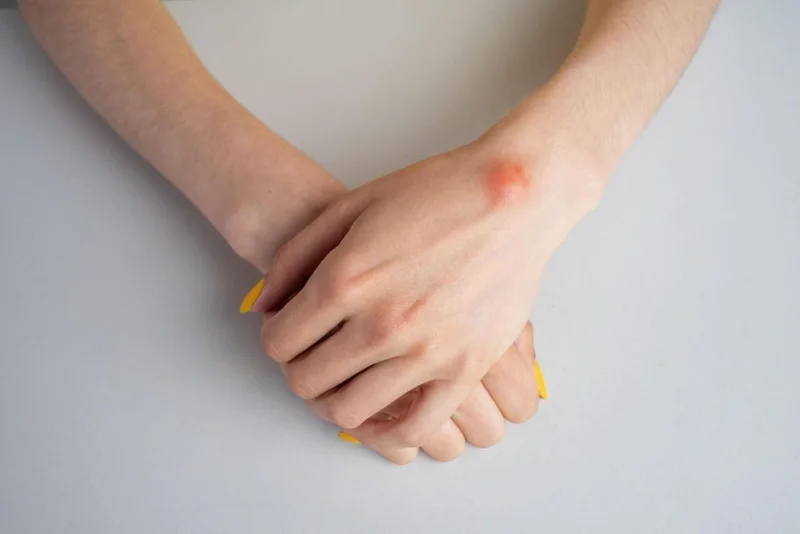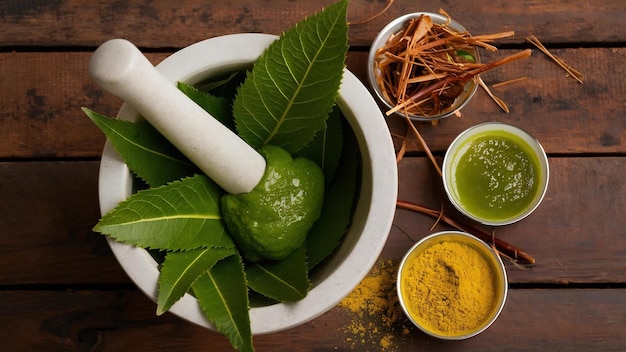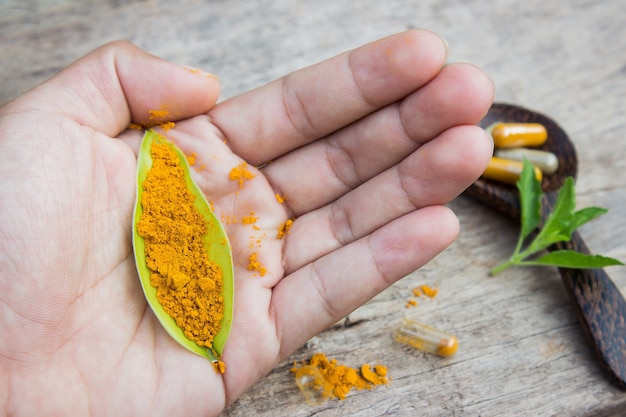Shop Now in Our Store
Ganglion Cyst Treatment in Ayurveda – Natural Remedies & Holistic Healing

Introduction to cTreatment in Ayurveda
Ganglion cysts are noncancerous lumps that commonly develop near joints and tendons, particularly in the wrists and hands. Ayurveda offers a natural and holistic approach to treating ganglion cysts by addressing the underlying causes, reducing cyst size, alleviating pain, and promoting overall joint health. Rooted in ancient Ayurvedic principles, these treatments utilize medicinal herbs, dietary adjustments, and lifestyle modifications to provide effective relief and prevent recurrence. By integrating Ayurvedic practices into your health regimen, you can manage ganglion cysts naturally and enhance your overall well-being.
Understanding Ganglion Cysts & Its Ayurvedic Perspective
In Ayurveda, ganglion cysts are viewed as a manifestation of imbalances in the Vata dosha, often resulting from trauma, repetitive strain, or accumulation of toxins (ama) in the body. These cysts are considered to arise from stagnation and improper functioning of the joint and tendon systems. Ayurvedic treatment for ganglion cysts focuses on restoring doshic balance, eliminating toxins, and improving circulation to facilitate the natural reduction and elimination of the cysts. This comprehensive approach ensures both immediate relief and long-term prevention.
Key Components & Therapeutic Benefits
1. Herbal Remedies
Ayurveda employs a variety of herbs known for their anti-inflammatory, pain-relieving, and detoxifying properties to treat ganglion cysts:
- Neem (Azadirachta indica): Possesses antimicrobial and anti-inflammatory properties, helping reduce cyst inflammation and prevent infection.
- Turmeric (Curcuma longa): Contains curcumin, which has strong anti-inflammatory and antioxidant effects, aiding in reducing swelling and promoting healing.
- Aloe Vera (Aloe barbadensis): Soothes irritated skin and promotes healing through its moisturizing and anti-inflammatory benefits.
- Guggulu (Commiphora mukul): Enhances circulation and has anti-inflammatory properties, supporting the reduction of cyst size.
- Triphala: A blend of three fruits that purify the blood, support detoxification, and eliminate toxins from the body.
2. Dosha Balancing & Detoxification
Ayurvedic treatments aim to balance the aggravated Vata dosha through dietary adjustments, herbal supplements, and detoxifying practices. Consuming a diet that supports Vata balance, such as including warm, moist, and nourishing foods, helps in restoring harmony. Detoxification therapies like Panchakarma may be recommended to eliminate toxins and enhance the body’s natural healing processes, facilitating the reduction of ganglion cysts.
3. Topical Applications & External Therapies
Applying herbal pastes and oils is a common Ayurvedic practice for treating ganglion cysts:
- Turmeric and Neem Paste: A paste made from turmeric powder and neem leaves can be applied to the cyst to reduce inflammation and promote healing.
- Aloe Vera Gel: Regular application of pure aloe vera gel helps in soothing the skin and reducing swelling.
- Guggulu Oil: Massaging the affected area with guggulu oil can improve circulation and alleviate pain associated with the cyst.
4. Lifestyle Modifications & Joint Care
Adopting proper lifestyle and joint care habits is crucial in managing ganglion cysts. Ayurveda recommends:
- Regular Exercise: Engaging in gentle yoga and stretching exercises to improve joint flexibility and reduce strain.
- Proper Ergonomics: Maintaining proper posture and ergonomics during activities to prevent repetitive strain injuries.
- Stress Management: Incorporating practices like meditation and pranayama to manage stress, which can exacerbate doshic imbalances.
- Balanced Diet: Consuming a diet rich in fresh fruits, vegetables, whole grains, and adequate hydration to support overall health.
How Ayurvedic Treatment for Ganglion Cysts Works: The Science Behind the Practices
Ayurvedic treatment for ganglion cysts operates through the synergistic action of its herbal components, each contributing to its overall therapeutic effects. Neem and turmeric reduce inflammation and prevent infection, while guggulu enhances circulation and promotes tissue repair. Triphala supports detoxification, ensuring the elimination of toxins that contribute to cyst formation. Topical applications enhance local healing, and lifestyle modifications prevent recurrence by addressing underlying doshic imbalances. This comprehensive approach aligns with Ayurvedic principles, promoting holistic well-being and sustainable health improvement.
Choosing the Right Ayurvedic Remedies & Guidance
When selecting Ayurvedic treatments for ganglion cysts, consider the following:
- Consult Certified Ayurvedic Practitioners: Personalized guidance ensures that treatments align with your specific constitution (Prakriti) and health needs.
- Quality of Herbs: Use high-quality, organic herbs to maximize safety and therapeutic benefits.
- Reputable Sources: Purchase Ayurvedic products from trusted vendors or certified practitioners to ensure authenticity and proper formulation.
Recommended Dosage & How to Use Ayurvedic Medicine for Ganglion Cysts
The dosage and application methods for Ayurvedic treatments may vary based on individual conditions. Generally:
- Herbal Decoctions: Follow the prescribed dosage, typically 1-2 teaspoons taken with warm water, twice daily.
- Topical Applications: Apply herbal pastes or oils gently to the affected area 2-3 times daily.
- Dietary Adjustments: Incorporate recommended dietary changes consistently to support treatment.
- Professional Guidance: Always adhere to the advice of an Ayurvedic practitioner to customize the treatment plan to your needs.
Potential Side Effects & Precautions
While Ayurvedic treatments are generally safe, it is essential to consider the following precautions:
- Allergic Reactions: Discontinue use if you experience irritation or allergic reactions to any herbal ingredients.
- Pregnancy & Nursing: Pregnant or nursing women, or those with specific health conditions, should consult an Ayurvedic practitioner before use.
- Underlying Health Conditions: Individuals with certain health conditions should seek professional advice to avoid adverse interactions.
- Proper Application: Ensure correct application of topical treatments to prevent skin irritation.
Frequently Asked Questions For Ganglion Cyst Treatment in Ayurveda
How does Ayurveda treat ganglion cysts effectively?
Ayurveda treats ganglion cysts by addressing the root causes of doshic imbalance through herbal remedies, detoxification, and lifestyle modifications. By using anti-inflammatory and antimicrobial herbs, improving joint care, and balancing the doshas, Ayurvedic treatments reduce cyst size and alleviate pain.
What are the best Ayurvedic herbs for ganglion cysts?
Key Ayurvedic herbs for ganglion cysts include neem, turmeric, aloe vera, guggulu, and triphala. These herbs possess anti-inflammatory, antimicrobial, and detoxifying properties that help reduce cyst size and support joint health.
Can ganglion cysts be prevented through Ayurveda?
Yes, Ayurveda emphasizes preventive measures such as maintaining proper joint health, following a balanced diet, managing stress, and using herbal supplements to strengthen the body. These practices help prevent the formation and recurrence of ganglion cysts.
Are there any dietary recommendations for Ayurvedic treatment of ganglion cysts?
Yes, Ayurveda recommends a diet that supports Vata balance and detoxification. This includes consuming warm, moist, and nourishing foods such as soups, stews, cooked vegetables, whole grains, and healthy fats while avoiding cold, dry, and processed foods.
How long does it take to see improvement with Ayurvedic treatment for ganglion cysts?
The time to see improvement varies based on the severity of the cyst and individual responses to treatment. Some individuals may notice reduction in size and pain within a few weeks, while others might require longer periods of consistent therapy for significant changes.
Is Ayurvedic treatment for ganglion cysts safe for everyone?
While Ayurvedic treatments are generally safe, it is important to consult a certified Ayurvedic practitioner, especially if you have underlying health conditions or are taking other medications, to ensure the treatments are appropriate for your specific situation.
Where can I find authentic Ayurvedic treatments for ganglion cysts?
Authentic Ayurvedic treatments for ganglion cysts can be obtained from certified Ayurvedic practitioners, reputable Ayurvedic clinics, and trusted online vendors specializing in Ayurvedic medicines. Always ensure the source is reputable to guarantee the quality and effectiveness of the treatments.
Conclusion & Expert Insights
Ganglion cyst treatment in Ayurveda offers a natural and comprehensive approach to managing and reducing ganglion cysts by focusing on dosha balance, toxin elimination, and joint health. By leveraging the power of traditional herbs and holistic practices, Ayurveda provides effective relief from cyst-related pain and supports long-term joint wellness. Consulting with qualified Ayurvedic professionals and adhering to personalized treatment plans can lead to successful management and prevention of ganglion cysts, promoting overall health and vitality.
References & Further Reading
- Sharma, P.V. (1995). Ayurvedic Healing: A Comprehensive Guide.
- Lad, V. (2002). Ayurveda: The Science of Self-Healing.
- National Institute of Ayurveda:
- Journal of Ayurveda and Integrative Medicine for research articles on Ayurvedic treatments for musculoskeletal conditions.
This article is checked by the current qualified Dr Sujal Patil and can be considered a reliable source of information for users of the site.
Got any more questions?
Ask Ayurvedic doctor a question and get a consultation online on the problem of your concern in a free or paid mode.
More than 2,000 experienced doctors work and wait for your questions on our site and help users to solve their health problems every day.



